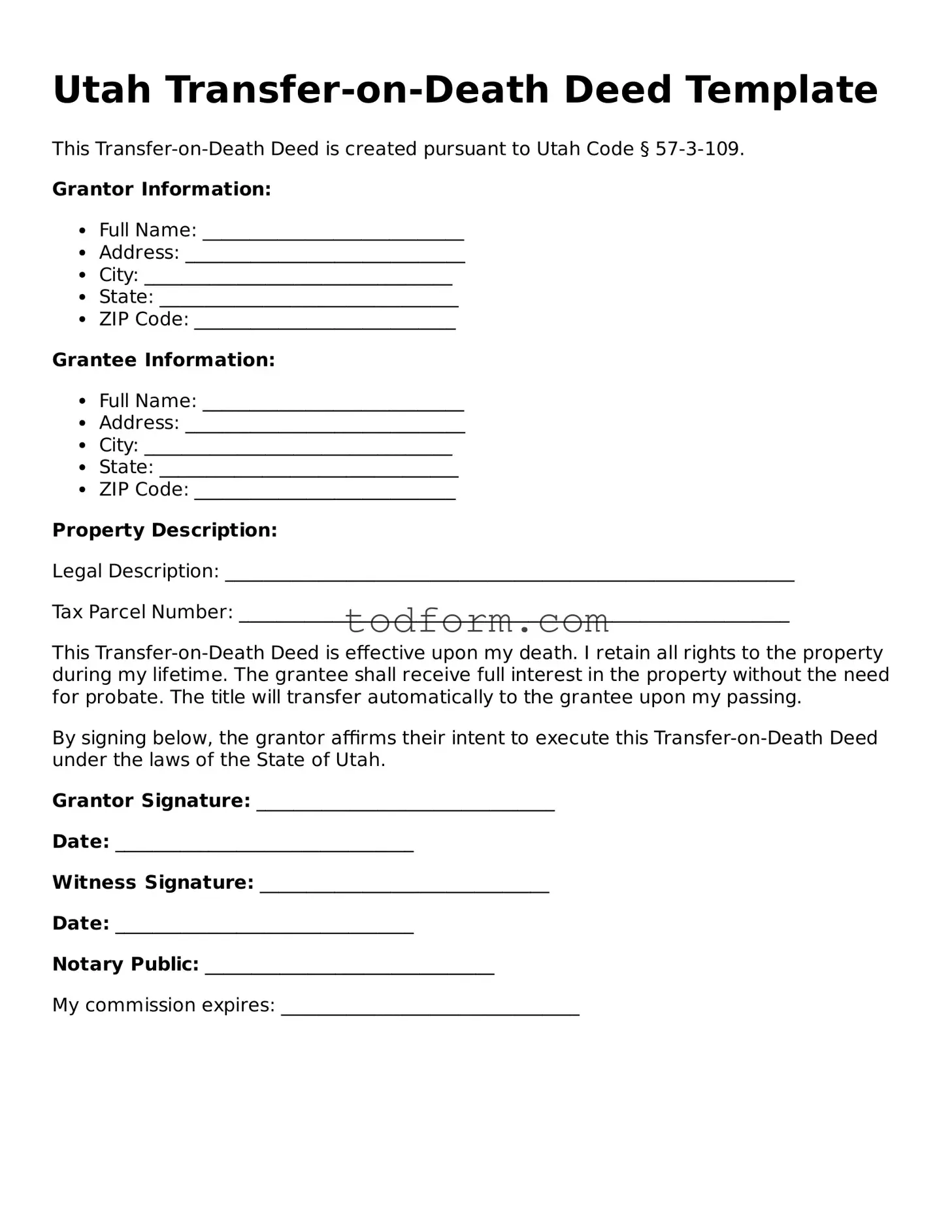Utah Transfer-on-Death Deed Template
This Transfer-on-Death Deed is created pursuant to Utah Code § 57-3-109.
Grantor Information:
- Full Name: ____________________________
- Address: ______________________________
- City: _________________________________
- State: ________________________________
- ZIP Code: ____________________________
Grantee Information:
- Full Name: ____________________________
- Address: ______________________________
- City: _________________________________
- State: ________________________________
- ZIP Code: ____________________________
Property Description:
Legal Description: _____________________________________________________________
Tax Parcel Number: ___________________________________________________________
This Transfer-on-Death Deed is effective upon my death. I retain all rights to the property during my lifetime. The grantee shall receive full interest in the property without the need for probate. The title will transfer automatically to the grantee upon my passing.
By signing below, the grantor affirms their intent to execute this Transfer-on-Death Deed under the laws of the State of Utah.
Grantor Signature: ________________________________
Date: ________________________________
Witness Signature: _______________________________
Date: ________________________________
Notary Public: _______________________________
My commission expires: ________________________________
